Effects of HIV-1 Tat on enteric neuropathogenesis
- PMID: 25339738
- PMCID: PMC4205550
- DOI: 10.1523/JNEUROSCI.2283-14.2014
Effects of HIV-1 Tat on enteric neuropathogenesis
Abstract
The gastrointestinal (GI) tract presents a major site of immune modulation by HIV, resulting in significant morbidity. Most GI processes affected during HIV infection are regulated by the enteric nervous system. HIV has been identified in GI histologic specimens in up to 40% of patients, and the presence of viral proteins, including the trans-activator of transcription (Tat), has been reported in the gut indicating that HIV itself may be an indirect gut pathogen. Little is known of how Tat affects the enteric nervous system. Here we investigated the effects of the Tat protein on enteric neuronal excitability, proinflammatory cytokine release, and its overall effect on GI motility. Direct application of Tat (100 nm) increased the number of action potentials and reduced the threshold for action potential initiation in isolated myenteric neurons. This effect persisted in neurons pretreated with Tat for 3 d (19 of 20) and in neurons isolated from Tat(+) (Tat-expressing) transgenic mice. Tat increased sodium channel isoforms Nav1.7 and Nav1.8 levels. This increase was accompanied by an increase in sodium current density and a leftward shift in the sodium channel activation voltage. RANTES, IL-6, and IL-1β, but not TNF-α, were enhanced by Tat. Intestinal transit and cecal water content were also significantly higher in Tat(+) transgenic mice than Tat(-) littermates (controls). Together, these findings show that Tat has a direct and persistent effect on enteric neuronal excitability, and together with its effect on proinflammatory cytokines, regulates gut motility, thereby contributing to GI dysmotilities reported in HIV patients.
Keywords: AIDS; HIV; cytokines; myenteric; sodium channels.
Copyright © 2014 the authors 0270-6474/14/3414243-09$15.00/0.
Figures
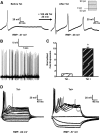

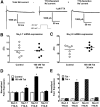
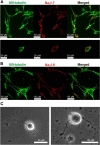

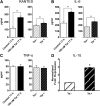
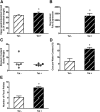
Similar articles
-
Sensitization of enteric neurons to morphine by HIV-1 Tat protein.Neurogastroenterol Motil. 2015 Apr;27(4):468-80. doi: 10.1111/nmo.12514. Epub 2015 Feb 19. Neurogastroenterol Motil. 2015. PMID: 25703354 Free PMC article.
-
HIV-1 Tat exacerbates lipopolysaccharide-induced cytokine release via TLR4 signaling in the enteric nervous system.Sci Rep. 2016 Aug 5;6:31203. doi: 10.1038/srep31203. Sci Rep. 2016. PMID: 27491828 Free PMC article.
-
Effects of Serotonin and Slow-Release 5-Hydroxytryptophan on Gastrointestinal Motility in a Mouse Model of Depression.Gastroenterology. 2019 Aug;157(2):507-521.e4. doi: 10.1053/j.gastro.2019.04.022. Epub 2019 May 7. Gastroenterology. 2019. PMID: 31071306 Free PMC article.
-
HIV, opiates, and enteric neuron dysfunction.Neurogastroenterol Motil. 2015 Apr;27(4):449-54. doi: 10.1111/nmo.12539. Neurogastroenterol Motil. 2015. PMID: 25817054 Free PMC article. Review.
-
Motility patterns in mouse colon: gastrointestinal dysfunction induced by anticancer chemotherapy.Neurogastroenterol Motil. 2016 Dec;28(12):1759-1764. doi: 10.1111/nmo.12990. Neurogastroenterol Motil. 2016. PMID: 27891756 Review.
Cited by
-
Role of Divalent Cations in HIV-1 Replication and Pathogenicity.Viruses. 2020 Apr 21;12(4):471. doi: 10.3390/v12040471. Viruses. 2020. PMID: 32326317 Free PMC article. Review.
-
Conditional expression of HIV-1 tat in the mouse alters the onset and progression of tonic, inflammatory and neuropathic hypersensitivity in a sex-dependent manner.Eur J Pain. 2020 Sep;24(8):1609-1623. doi: 10.1002/ejp.1618. Epub 2020 Jul 16. Eur J Pain. 2020. PMID: 32533878 Free PMC article.
-
HIV-1 Tat-induced diarrhea is improved by the PPARalpha agonist, palmitoylethanolamide, by suppressing the activation of enteric glia.J Neuroinflammation. 2018 Mar 24;15(1):94. doi: 10.1186/s12974-018-1126-4. J Neuroinflammation. 2018. PMID: 29573741 Free PMC article.
-
Complex alterations in inflammatory pain and analgesic sensitivity in young and ageing female rats: involvement of ASIC3 and Nav1.8 in primary sensory neurons.Inflamm Res. 2024 Apr;73(4):669-691. doi: 10.1007/s00011-024-01862-z. Epub 2024 Mar 14. Inflamm Res. 2024. PMID: 38483556
-
[3H]Dopamine Uptake through the Dopamine and Norepinephrine Transporters is Decreased in the Prefrontal Cortex of Transgenic Mice Expressing HIV-1 Transactivator of Transcription Protein.J Pharmacol Exp Ther. 2020 Aug;374(2):241-251. doi: 10.1124/jpet.120.266023. Epub 2020 May 27. J Pharmacol Exp Ther. 2020. PMID: 32461322 Free PMC article.
References
Publication types
MeSH terms
Substances
Grants and funding
LinkOut - more resources
Full Text Sources
Other Literature Sources
Molecular Biology Databases
